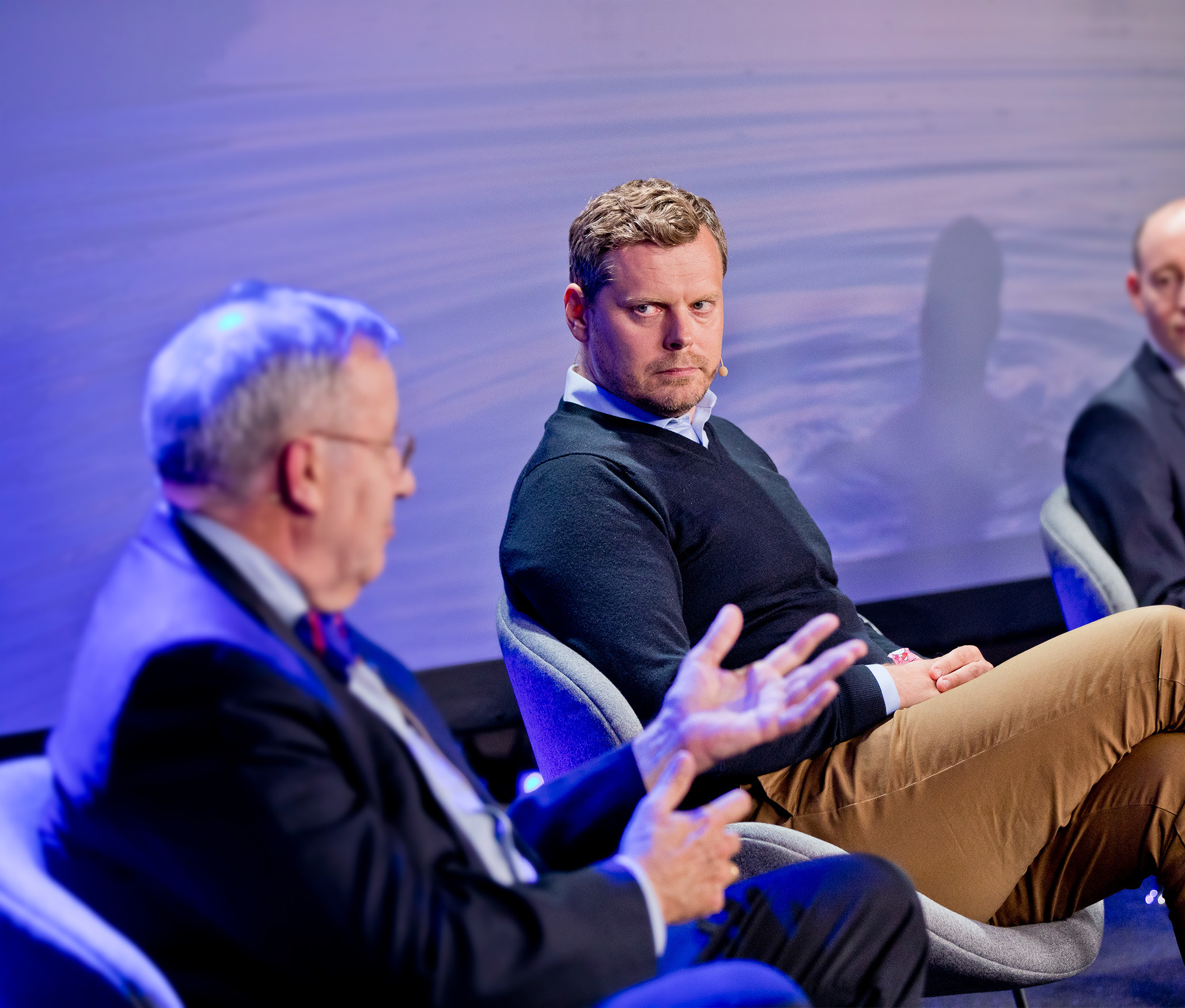
White Paper
Why build a digital government
Governments globally are facing a huge challenge – exponentially, all around the world people are expecting interactions with the state to take place online. Even more so, citizens are expecting governments to treat them as valued customers whose user experience matters. Mastering the transition from paper to digital is a complex process, but some countries are already taking leaps toward a truly seamless society and with their interactions with citizens to the next level.

Living in a digital age
There’s no doubt about it, governments have to go digital. Not only to meet the new demands from their population, but also to make their economies more competitive.
According to McKinsey & Co, almost €1 trillion could be freed up annually worldwide if full potential of government digitalization is captured. In Denmark, for example, electronic invoicing saves taxpayers €150 million and businesses €50 million a year. In Italy alone, e-procurement systems cut more than €3 billion in costs. The Estonian government estimates that digital signatures alone save the country the equivalent of 2% of GDP annually. And according to the United Kingdom’s government estimates, gov.uk saved more than €48 million in government spending within a year of its launch. McKinsey has also pointed out that if Sweden can fulfill its digitalization potential by taking advantage of six important technological trends, it could generate €79-130 billion per year by 2025.
Electronic ID, a cornerstone of digital government
A key enabler in digital transformation is the implementation of electronic identities — an essential component of infrastructure upon which the future of e-government and private e-services will be built. A unique electronic ID with full capacity to make legally binding actions online – anywhere, anytime – provides a huge advantage for people, companies and governments alike.
According to McKinsey, countries could unlock economic value equivalent to between 3 and 13 percent of GDP in 2030 from the implementation of digital ID programs, with just over half of the potential economic value potentially accruing to individuals.
Digital ID can also unlock noneconomic value, potentially furthering progress toward ideals that cannot be captured through quantitative analysis, including those of inclusion, rights protection, and transparency. Digital ID can promote increased and more inclusive access to education, healthcare, and labor markets; can aid safe migration; and can contribute to greater levels of civic participation.
In Estonia, people give approximately 300,000 digital signatures every day. They use their digital identities to utilize government services such as getting information about how much taxes they’ve paid, looking up who their family doctor is or seeing whether someone has accessed their information online. They also use their electronic IDs to vote.
Nortal has helped build and modify already existing eID solutions and integrate them into services, making eID a natural part of the existing e-government infrastructure. We support the provision of all aspects necessary for a successful implementation of Electronic Identity — whether it is eID infrastructure, trust services, digital signatures, authentication solutions, establishing policy, supporting legal environment or nationwide e-governance.
Backstory: Why Estonia went digital
Estonia started building a digital society after it restored its independence in 1991. The country’s economy collapsed, about every third adult worked in agriculture, more than 50% of the industry was military-oriented. There was no decent banking system nor a national currency. Modern telecommunication infrastructure was missing, and the average salary was less than ten euros a month.
As President of Estonia, Kersti Kaljulaid has said that the crucial question was how to overcome the legacy left by the Soviet occupation. “Our response was — we need to build up a modern, efficient and democratic state,” Kaljulaid said in a speech in 2017. Radical reforms were carried out in all walks of life. “The forward looking idea was to harness the innovative potential of Information and Communication technology (ICT). Neither we nor anyone else knew 20 years ago, how important Internet and ICT would become and what role it would play in the organization of state and society.”
Although the choice to turn to technology was not an easy one, Estonia’s gamble paid off. “In hindsight we can agree that the ‘Tigerleap’ program, as it was called, gave the entire Estonian society the momentum to make a digital leap into the future,” Kaljulaid said. “Schoolchildren, having become computer literate, brought their newly acquired skills home and also ‘infected’ their parents (and grandparents) with the digital ‘bug.’ Priorities changed for families — instead of a new refrigerator, it was often decided to rather invest into a computer and an internet connection.”
Today, 99% of government services in Estonia are digital. 97.9% of Estonians use Internet regularly.Almost everyone has an active, electronic ID-card in their pocket that enables Estonians to give more than 100 million digital, legally binding signatures a year.
Perks of digital society
Voting takes only few minutes
People can vote in their pajamas at 3 AM if they feel like it. Or from Rio de Janeiro, if they happen to be out of country during elections.
Filling tax report takes less than three minutes
Filing annual tax report takes less than three minutes as the tax administration already has your complete income information and the form comes prefilled. People simply need to digitally sign the report at the most convenient time of their day.
Access to patient records, online
Access to electronic patient records means you can show up at a doctor’s office and give them rights to view your securely stored-online medical history.
Prescription is only a phone call away
Prescription medicine can be a quick phone call away — with a digital prescription you can pick up your medicine at a random pharmacy, you simply need your ID card.

Dig deeper into our government expertise
Read more about our public sector expertise and how we have created some of the most advanced digital government building blocks in the world.
Learn moreGet in touch
Let us offer you a new perspective.


